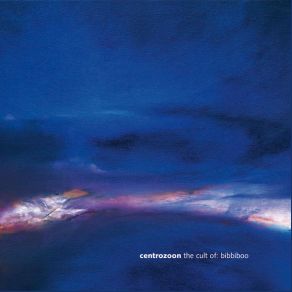The Cult of: Bibbiboo
Download links and information about The Cult of: Bibbiboo by Centrozoon. This album was released in 2002 and it belongs to Electronica, Jazz genres. It contains 6 tracks with total duration of 01:17:15 minutes.

|
|
|---|---|
| Artist: | Centrozoon |
| Release date: | 2002 |
| Genre: | Electronica, Jazz |
| Tracks: | 6 |
| Duration: | 01:17:15 |
| Buy it NOW at: | |
| Buy on iTunes $9.99 | |
Tracks
[Edit]| No. | Title | Length |
|---|---|---|
| 1. | The Golden Lamb (Pts. 1-3) | 13:27 |
| 2. | Healing the Land | 8:57 |
| 3. | All the Time It Is Using Us | 7:24 |
| 4. | The Cult of: Bibbiboo | 20:36 |
| 5. | Deliverance / The Divine Beast | 10:04 |
| 6. | Thusgg | 16:47 |
Details
[Edit]Like its previous record, Sun Lounge Debris, the Centrozoon duo lets immediacy and improvisation be its guide on The Cult Of: Bibbiboo, with its six often lengthy songs taken from a two-day session from June 2000. The basic arrangement of the band remains the same, with Markus Reuter on touch guitar and Bernhard Wöstheinrich handling synths and percussion. Finding some ground between ambient/techno float, space rock zone, and art rock chops, but by not trying to specifically aim at a particular style or approach — for instance, "All the Time It Is Using Us" may have a quirky, half-glitched-up rhythm, but covered in a wash of echo it's more a series of signals — Centrozoon steer away from half-hearted fusion to their own particular logic. More than once — check the beginning of "Healing the Land" — it suggests Eno circa Apollo, not a bad place to be at all, with Reuter's ability to create a brief, thrilling hero rock riff as needed, giving the compositions a nice bit of bite. That there's a bit of prog in it all isn't merely noticeable with Reuter's choice of instrument but the fact that the first song is called "The Golden Lamb, Pts. 1-3)" — though unlike far too many such efforts over the moon, the breakdown here has a clear point. A calm start shifts into a sudden pulsing (if still muffled) beat before reaching a more ambient middle that slides into a newly active — but far less immediately danceable, doubtless for good reason — rhythm conclusion, high keyboard and guitar tones arcing over the top. The title track is the standout, with Wöstheinrich's beat chaos going near full gabbber levels at points throughout the 20-minute composition, all while soothing keyboards and alternately screaming and calm guitar take the lead.